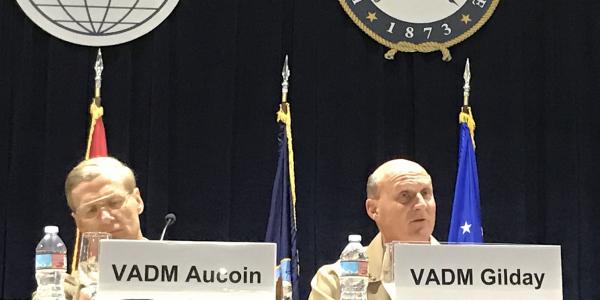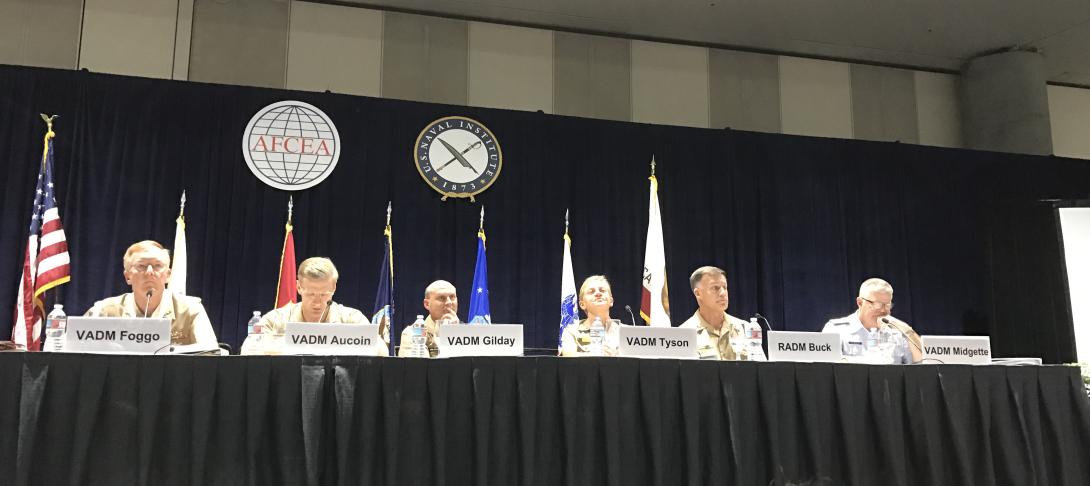Is the U.S. Military Ready to Fight? It Depends
Emerging cyber trends such as the rapid increase in the number of bad actors, increased capabilities and sophistication, and the high degree of automation complicates a key question posed to U.S. military leaders: Are the armed forces ready to fight?
Emerging cyber trends such as the rapid increase in the number of bad actors, increased capabilities and sophistication, and the high degree of automation complicates a key question posed to U.S. military leaders: Are the armed forces ready to fight?
In the cyber realm, the answer is: “It depends,” said Vice Adm. Michael Gilday, USN, commander of U.S. Fleet Cyber Command/10th Fleet.
Is the U.S. military to fight in #cyberspace? 'The real answer is: it depends,' Vice Adm. Gilday says at #WEST2017
— Sandra Jontz (@jontz_signalmag) February 21, 2017
Cyberspace has no home port. Hackers operate from a coffee shop in Portugal or a library in Uganda, merging in and out of the free yet obscure traffic jam that includes some 4 billion online users at any given time, he said. And the cyber domain lacks agreed-upon international agreements and norms that otherwise would keep a tamp on a cyber arms race, Adm. Gilday offered during an afternoon a panel discussion at the naval West 2017 conference, going on this week in San Diego.
The same bad actors who targeted the emails of Sony Pictures Entertainment are targeting the U.S. Defense Department and other federal agencies, with .com and .mil sites as equal targets of opportunity, he said.
But one advantage the defense department has over adversaries is “the partnership we have with industry,” Adm. Gilday said. “The information you collect and share with us … adds to our adversary playbook and provides a better understanding."
This year’s conference, co-sponsored by AFCEA International and the U.S. Naval Institute, tackles the overarching theme: Ready for Today, Modernize for Tomorrow: How Can We Maintain the Edge?
Getting to the heart of the panel’s focus on combat readiness depended on who was asked. The U.S. Coast certainly is ready, offered Vice Adm. Fred Midgette, USCG, commander of Pacific Area and commander of Coast Guard Defense Force West. “Can we fight harder? That’s where I hesitate,” he said. High operational tempos have taken a toll on the Coast Guard, just as they have for at the Navy, Marine Corps, Air Force and Army. “We have used up our surge capacity,” Adm. Midgette said. “The pedal is all the way down.”
Answers offered by other panelists were more optimistic. “Unequivocally, we’re prepared to fight if necessary,” said Vice Adm. Joseph Aucoin, USN, commander of the 7th Fleet. Though much of the federal government has struggled under budget cuts and sequestration, the constraints did not hit Pacific forces, benefiting in equipment and forces from the Defense Department's Asia-Pacific pivot. “Not so much in 7th Fleet,” Adm. Aucoin shared.
3 things sending strong military deterrence message to #NorthKorea, Vice Adm. Aucoin shares: technology, partnerships & training #WEST2017
— Sandra Jontz (@jontz_signalmag) February 21, 2017
Globally, however, the military has felt the pains of prolonged wars in Iraq and Afghanistan. The Navy, in particular, suffers from a readiness gap among its carrier strikes groups, for example, with fewer deployed or ready to deploy than in years past.
Innovation might be the key to improving readiness, though Vice Adm. James Foggo III, USN, director of Navy Staff and former commander of the U.S. 6th Fleet, offered that the word is grossly overused.
Answering panel question: Are we ready to fight? 'We are, but only if we have to,' Vice Adm. Foggo says at #WEST2017
— Sandra Jontz (@jontz_signalmag) February 21, 2017
Yet for Vice Adm. Nora Tyson, USN, commander of the U.S. 3rd Fleet, outcomes of innovation must be leveraged to prepare military forces to “go fight at the highest end they may be required to,” she said, referring to conflicts with near-peer adversaries.
To that end, with the lack of actual platforms, the military will rely even more on the virtual training world, she said. “Because we don’t have as many ships, aircraft or subs at our disposal that we’d like to have to prepare forces … we have really got to leverage that live virtual constructive training,” Adm. Tyson said.






Comments